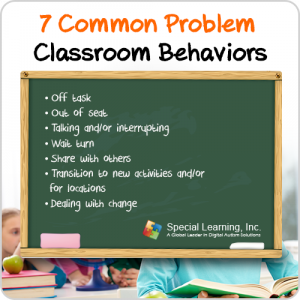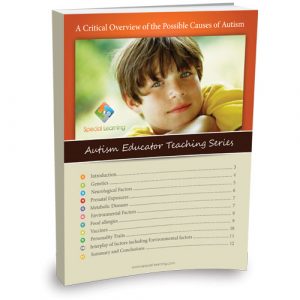Traveling By Air with Your Autistic Child
Fear of flying, or aerophobia, is a condition in which a person has extreme anxiety any time he or she is forced to travel in an airplane – that is, if he or she can be forced to do so at all. But if you are like many parents who have a child with ASD, you may suffer from a different condition: Fear of flying… with your autistic child. Some parents would rather drive their child halfway across the country than try to deal with the special challenges that airplanes and airports create for a child with autism. The bustling crowds, unfamiliar sounds, TSA officers in uniform, and foreboding security machines can be very threatening to children in general and could cause sheer panic in a child with a disorder in the autism spectrum. Nevertheless, traveling by air is something most people need to do at least occasionally. If you are considering flying with your diagnosed child, taking time to prepare in advance can save you enormous stress and anxiety during your journey.
Here are some points that can help a parent traveling with a child with autism:
Plan for Your Trip Ahead of Time
When it comes to traveling with an autistic child, there is much more to preparing for a flight than just booking seat tickets and packing clothes. One of the best ways to begin is to call the airline and tell them you have an autistic child and ask them if they are used to having autistic children as passengers and if so, what services they offer for helping children like yours. The chances are very good that the airline’s staff knows just what to do and they can aid you from the moment you arrive at the airport.
To start with, most airlines will be happy to provide you and your child with faster check-in and boarding procedures to lessen your child’s anxiety by avoiding the long lines you would typically encounter. You could also opt for a flight that leaves at night so your child will fall asleep faster and have smaller crowds to deal with.
Make sure that at least one of the seats you reserve is a window seat. Once you board the plane you can quickly determine if your child likes sitting at the window and looking out of the plane. If the child seems to enjoy it, sitting by the window and watching the view could help distract your child from the loud noise and rumbling that occurs during take-off and landing.
“Immunize” Your Child Prior to the Actual Flight
Any time you expose your autistic child to new events, places, people and sounds it is a good idea to prepare your child for the new experience with a few basic techniques. By pre-exposing your child to many of the things they will see and sounds they will hear through pictures, videos, social stories, and field trips, you can significantly reduce the trauma your child will feel when you actually go on your trip.
Use picture cues – if it is the child’s first airplane trip, use pictures to introduce your child to what an airplane, airplane crew, and airport look like. Familiarize your child with different things, people, and equipment he or she might be seeing on an actual day. An example would be showing your child a picture of a flight attendant and informing him or her that a uniformed person like the one in the picture will be helping you with all your needs.
- Use Video Modeling or Role-Playing – you can use video modeling or role-playing to explain to your child that he or she will be frisked upon entering the airport. Discussing how he or she is expected to react during the frisking and assuring your child that everything will be okay is a good way of easing your child’s tension. If you can, go to the airport and record video of the surroundings as much as you are allowed by airport security. Show one of your other children or other anonymous children going through the security system and being frisked, what the airplanes look like as they take off and land, etc.
- Tell Social Stories – Social stories are a very helpful way to prepare your child for an airplane voyage. Make sure that you repeat each story numerous times before the actual day of travel until your child feels comfortable with the story and idea. A nice example would be using a social story to tell your child about the ear sensation he or she might feel upon the descent of the aircraft. Air pressure in the ears can be equalized by swallowing or chewing, so telling your child a story about the feeling and how it can go away with chewing gum will prepare him for the actual flight.
- Immersion – with regards to the large crowds in an airport, you can start by exposing your child to a small group of people. An example would be taking your child with you to a bank where a number of people are waiting in line for their turn. Then you can eventually move to a larger group, say the mall or a big restaurant. Gradual exposure will not only prepare your child but also improve your child’s social coping skills.
Load your Carry-on
Whether the flight is a short or long one, you should bring plenty of tools to help keep your child distracted. Bring a set of noise-canceling earplugs or an MP3 player to distract your child from loud sounds (but be aware that the airline will likely require turning the player off during take-off and landing). A pair of the darkest sunglasses you can find may also reduce your child’s sensitivity to visual stimulation, crowds and warning lights. Bring your child’s ‘security blanket’ or favorite toy; or anything that will serve as a distraction while you are in the air. If your child loves coloring or drawing, a set of new crayons or markers will definitely excite him and keep him busy. You can also ask the airline if they have a kid’s pack, which usually contains a coloring book and a set of crayons. Packing your child’s favorite snack and drink would also be a good idea. And of course, don’t forget to pack medications for autism that your child needs to take during the flight. Make sure you have the prescription and other necessary papers needed to carry these medications to avoid any unwanted questioning at the airport.
Have a ‘Plan B’
If all else fails and your child begins to show signs of panic, you should have a ‘Plan B’ ready just in case. One option is to have whatever medication your doctor recommends that will slightly sedate your child during the course of the flight. Common sedatives in this group are Diphenhydramine (Benadryl) or Promethazine (Phenergan), which are over-the-counter antihistamines, but make sure you have consulted your pediatrician regarding which sedative to use and what dose can be safely administered to your child. Do not use a sedative without your pediatrician’s approval. Remember that sedating your child should be your last option.
With the right preparation, it is possible for your child’s airplane trip to be an exciting and joyous event for you and your autistic child, rather than a stressful or traumatizing one.
References:
autism-pdd.net/testdump/test12886.html
autismspeaks.org/docs/family_services_docs/schlosser.pdf
Copyright © by Special Learning Inc. All right reserved.
No part of this article may be reproduced in any manner whatsoever without written permission except in the case of brief quotations embodied in critical articles and reviews. For information, contact Special Learning Inc., at: contact@special-learning.com










